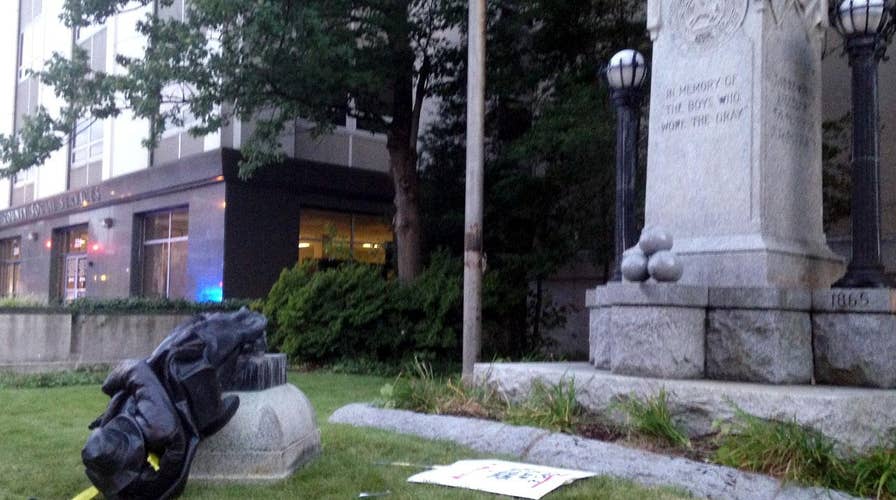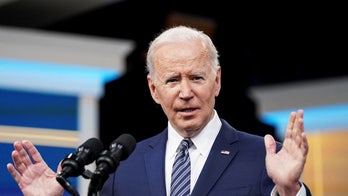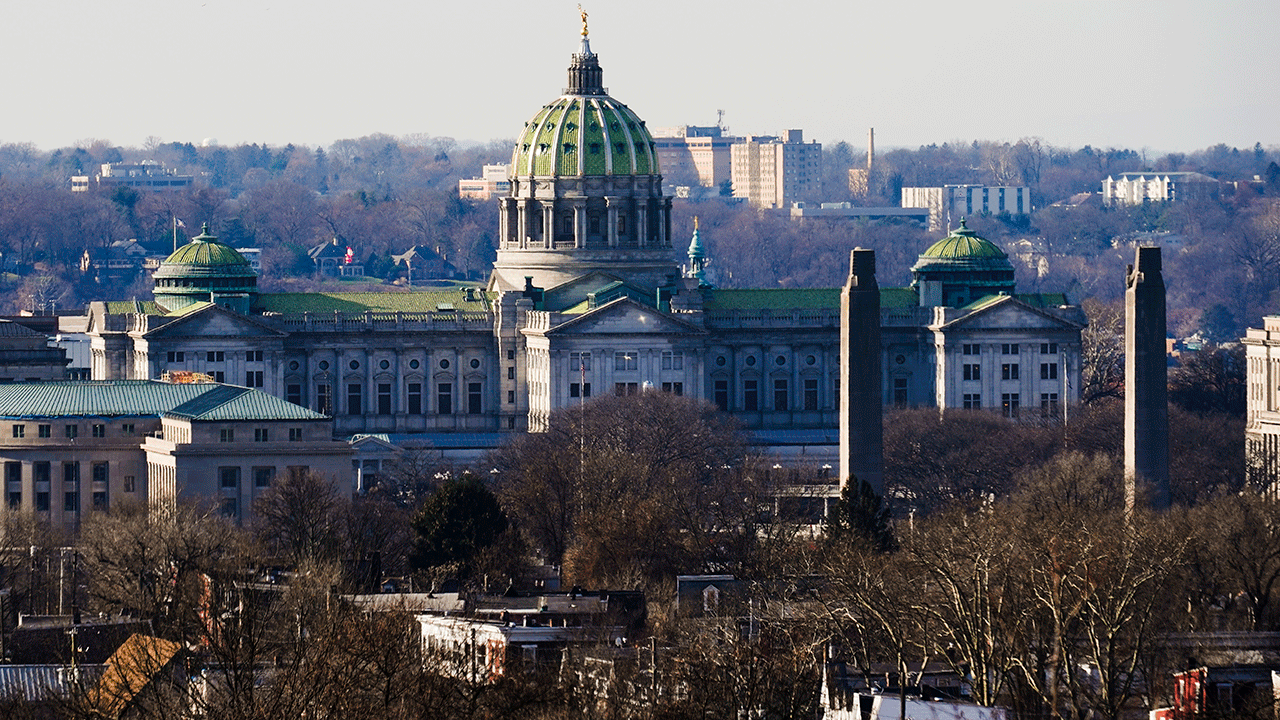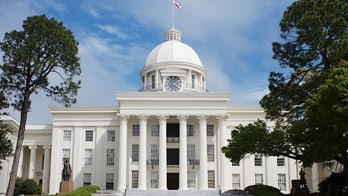Rumors swirl of vigilante threats to Confederate statues
Protesters in Durham, North Carolina tear down statue dedicated to the 'Boys Who Wore The Gray'; Doug McKelway reports from Charlottesville, Virginia
With a wide, yellow nylon strap roped around the neck of a 15-foot monument of a Confederate soldier, 100 protesters in Durham, N.C., spat, kicked and cheered Monday night as they toppled the rifle-toting statue that had been in place for nearly a century.
Durham County Sheriff Mike Andrews and other local authorities knew it was going to happen – and were even on the scene – but didn’t step in to stop it.
“County leaders were aware of the risk of damage to the Confederate statue, as well as the potential risk of injury to the public and officers should deputies attempt to control the crowd,” Andrews said in a statement Tuesday. “Collectively, we decided that restraint and public safety would be our priority.”
The Durham incident is now raising questions about how other cities will handle the next wave of protests over Confederate monuments, in the wake of last weekend's violence in Charlottesville.
Officials in cities across the South have renewed calls to remove these symbols. But this is normally done at the official level, and the prospect of mobs forcibly removing statues is sure to put pressure on local authorities to make a decision: Will they let protesters vandalize and destroy the symbols some see as hateful, or will they secure them and prosecute those trying to tear them down?
In the case in Durham, the answer seems to be a combination of both.
Andrews said that even though his deputies didn’t prevent Monday’s incident, he would not turn a blind eye to the criminal conduct and vowed to bring charges against those responsible.
The Durham incident was in response to Saturday’s rally-turned-riot in Charlottesville, Va. In that case, white supremacist groups protested the removal of a 1924 statue of Confederate Gen. Robert E. Lee and the renaming of a park.
The rally unfolded into a horrific scene of violence. One counter-protester was killed in a car attack, 19 were injured and two state police officers died in a chopper crash. The events in Charlottesville prompted pop-up protests from coast to coast.
In Atlanta’s Piedmont Park, there was virtually no police presence when protesters on Sunday climbed a statue of a winged angel standing over a Confederate solider – and defaced it. Tension escalated as the only officer at the scene was surrounded by protesters shouting “pig” in his direction.
The city has strongly condemned the action, and law enforcement say they’ll go after violators.
“We will not tolerate acts of vandalism or destruction of property and we’ll work to identify and arrest those who engage in these unlawful activities,” Atlanta Police Department spokesman Carlos Campos told Fox News.
Across the country, 718 Confederate monuments and statues remain, with nearly 300 of them in Georgia, Virginia and North Carolina. There are also 109 public schools named after Gen. Robert E. Lee, Confederate President Jefferson Davis and other historical figures from the Civil War-era, according to the Southern Poverty Law Center.
From a tactical standpoint, putting law enforcement in riot-like situations with few resources can spell disaster. In some cases, sheriffs argue, the smartest and safest option would be to let protesters destroy artifacts and later pursue criminal charges.
In Baltimore, a monument of a dying Confederate soldier was drenched in red paint over the weekend. City Mayor Catherine Pugh said in a statement she’s moving forward on a plan to remove several Confederate city statues, including ones of Lee and Stonewall Jackson, but did not say whether violators who jump the gun would be held criminally responsible.
Confederate symbols have been the topic of heated debate ever since June 17, 2015, when 21-year-old Dylann Roof opened fire in a historically black church in Charleston, S.C. – murdering nine people who were there for a bible study. Roof confessed he committed the crime in hopes of igniting a race war.
Video and pictures surfaced of Roof spitting on and burning the American flag while posing proudly for pictures and waving the Confederate flag.
Since then, there has been a nationwide push to remove Confederate symbols from public places but it’s also been met with strong resistance.
In April, New Orleans Mayor Mitch Landrieu ordered the removal of multiple Confederate statues and faced a stiff backlash. He was forced to have heavy police presence in place when the nighttime removals began.





